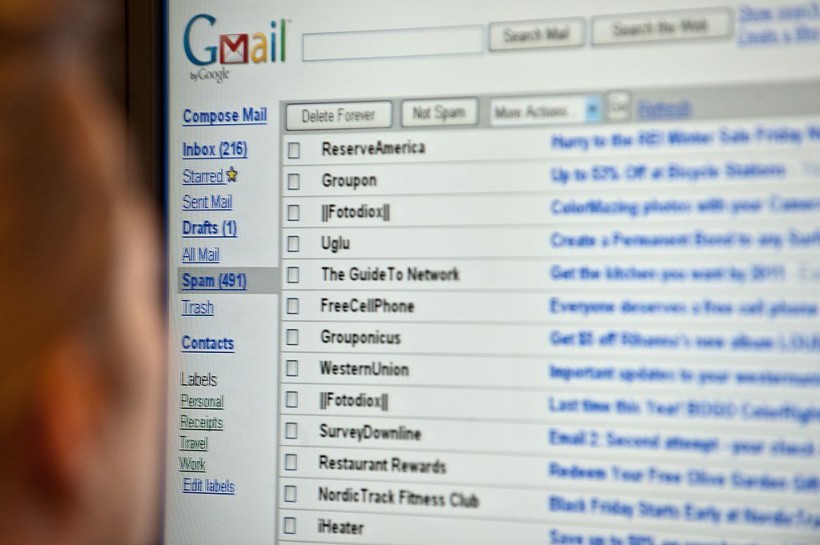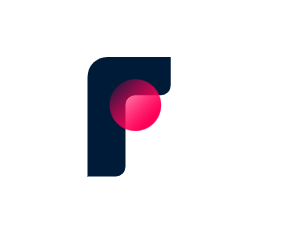
An integral part of managing a business is to stay visible to your customers. To achieve this, you need the best and most reliable shared inbox software to set emails in them. You can make use of email platforms alone, but managing it would take time, effort, and pressure. The key to keeping your business afloat is to remain calm and collected. Here are our shared inbox applications for you to ease your worries when it comes to your email workflows.
What Is a Shared Inbox?
If you're not familiar with it yet, a shared inbox is exactly what it seems. It's an electronic mailbox that your team can access to streamline email workflows no matter how much bulk there is. It works on different email platforms such as Gmail, Outlook, Office 365, etc. Some applications even support social media messages and live chats.
How Do I Manage a Shared Inbox?
Suppose you already figured out that you need a shared inbox software. Managing it is another story. There are platforms offering productivity, editing, and collaborative tools. These tools let you deal with your mailboxes with your team at a faster pace, accompanied by quality services. To learn which of them has it, take a look at our top 5 here:
#1 Front
If you're seeking the best shared inbox software online, one search away, and you'll find the most popular of all -- Front. Besides its popularity, its competitive edge lies in its multi-account, all-in-one, and comprehensive inbox to reach out to every recipient on your list. No longer will you have to move emails from one account to another because you can manage it all under one platform using Front.

Aside from emails, you can also manage messages from different social media applications, text messages, and even live chats within Front. Therefore, best expect that you can deliver updates/messages to anyone using any of the said messaging services. Plus, it also zeroes in teamwork, whereas you can edit emails in Google Docs together. In return, you are promoting better collaboration and preventing duplicated replies.
Then, to shift your workspace to its platform, you can connect your inbox to over 50 applications. This boosts productivity and flexibility practices within your team.
Key Features and Advantages
-
Lets you manage all your messaging apps in one glance
-
Works with common social media accounts
-
Allows you to work with your team while crafting an email
-
Prevents duplicated messages and promotes workplace productivity
-
Integrates with workspace application for further flexibility in work operations
#2 HubSpot
Designed as a CRM, HubSpot is one of the best shared inbox software you can use in the market. Simply sign up for its free CRM, and you'll immediately get ahold of its conversation tool. This tool allows you to link your professional email handles into a shared mailbox dedicated to your team. Or, you could also connect your email aliases if you want to. Currently, it supports Gmail, Office 365, Outlook, and more.

Upon linking, you can immediately combine access for all teams in different departments to view, manage, and reply to every email thread. The good thing about this is its integration with CRM, where you can obtain all the information you need. With this, you have the liberty to access lists of contact information. Then, it's up to you to make customized responses per recipient.
Moreover, there are also available productivity tools for more personalized email replies. You can use templates, form automated responses, send and save documents, and more. You can do all these without even leaving the inbox.
Key Features and Advantages
-
Connects your emails into one participative inbox
-
Uses inbox for team communications
-
Makes templated responses / personalized emails
-
Integrates with a free CRM to see and use customer information and history before drafting a reply
-
Supports Gmail, Office 365, Outlook, and other email apps
-
Provides productivity tools for better email threads
#3 Kayako
When you widen your internet surfing, you'll find that the best shared inbox often offers other accompaniments. Kayako sweeps that classification. With its features and help desk software, you won't just improve your email workflows but also your customer service.

True to its qualities, Kayako's feature-rich shared mailbox tool mainly concentrates in keeping all your interactions with your clients/customers across email apps, social media platforms, and live chat channels in one place, while keeping the entirety of your conversation thread neatly organized and openly accessible to your team.
Since everyone in your group is involved, you can reply faster and smarter to each recipient. Because of this, Kayako may help you gain insights on how to work on customer satisfaction and make it better at the same time.
Key Features and Advantages
-
Takes in all email threads between you and your client from different social media accounts in one collaborative inbox
-
Promotes seamless customer support with real-time insights on your email efforts
-
Provides personalized conversation with you or someone from your team to obtain relevant info
-
Works with your team while talking to your customer
-
Assigns emails based on the department it suits best
#4 Help Scout
As the name promises, Help Scout is one of the best shared inbox software carefully crafted with one primary purpose -- to help your teams in delivering a great customer experience. It provides powerful collaboration tools such as private notes that help improve communication with one another. Another functionality it serves is collision detection which prevents duplicated messages.

Moreover, that's not the only feature you can have in the palm of your hand. Help Scout also assigns a productivity tool called 'workflow.' This sends customer conversations automatically to specific agents or custom folders based on criteria you gave and specified. Speaking of conversations, you can use saved replies if you have a routine response.
Help Scout is designed to make sure you connect with each of your customers, no matter how impossible it sounds. To make this happen, you can access the 'customer profile.' With this, you can view previous conversations and see basic information about your customers. This will help make interactions seamless and reduce frustrations on both ends.
With a little bit of team workspace and a full hands-on feature for your customers, it's no wonder Help Scout is one of the best email management software today.
Key Features and Advantages
-
Offers collaboration tools for your teams
-
Lets you communicate with other team members
-
Detects possibly duplicated messages
-
Has a productivity tool to automate email management
-
Is designed to make sure you are up to date with your customer's concerns
#5 Keeping
If you opt to get started quickly, Keeping is your best choice. It's one of the fastest and simplest ways to share an inbox right inside your Gmail account and other email platforms you use. With Keeping, your shared inbox is in sync with the respective email accounts of your team members.

The remarkable part about Keeping is that it's built inside Gmail. There's no need to switch to another tab to head over to your email accounts nor type in your log-in credentials into other platforms. Simply use it, and you'll already stay on top of your email threads.
Using its helpdesk software, you can assign, prioritize, and tag incoming messages from your mailbox. Doing so allows you to deliver a swift response to your customers. Take a look at its pivotal features to upgrade your email workflow.
Key Features
-
Work Collaboration inside Gmail
Keeping allows your team to receive, respond to, and assign support emails straight from their inbox. At the same time, it also prevents you from working on the same route, thanks to advanced collision detection.
You can then establish accountability by sharing workloads and assigning requests to everyone in the team with corresponding expertise. Besides that, you get to use statuses by marking emails as Open, Closed, or Pending. Due to its better collaboration tools, Keeping classifies as one of the best Google Groups alternatives.

Collaboration
-
Simple and Streamlined Operations
With Keeping, you can get started in just three minutes. You can add as many shared inboxes as you wish. At the same time, easily share notes with your team for easier communication. You can also send an automated yet customizable reply to let your customers know you received their messages. If you're getting repetitive questions, you may save and send templated responses in just one click.
-
Report and Track
Obtain advanced reporting to see every data you need and oversee the progress of your team's email workflow. You can track the time for first responses, how your team responds, and the volume of messages they're getting.

Team Reports
-
Workflow Automation
Keeping does most of the work for you to simplify your work. It automatically assigns tickets, prioritizes urgent messages, and ignores spam and promotional emails.

Assign
-
Private and Secure
On top of it all, Keeping keeps your privacy and security seriously all the time through data encryption. Since it's primarily used for a Gmail shared inbox, it's built on Google's infrastructure.
To summarize, Keeping keeps your team's work neatly tucked and organized under pressing complications. Another thing -- it's also affordable compared to other mentioned software in our list of the best shared inbox software. It also makes sure that you only get the most out of its services.
In fact, it's a Front alternative in case you couldn't get the hang of the latter since it's more complex than Keeping. Still, if we compare, it has more jam-packed features and is easier to use at an affordable rate.
Pros
-
Easy to set up with communication status and shared notes for your teams
-
Offers multiple mailboxes, response templates, and advanced reporting and collision detection
-
Can be accessed using any browser or mobile device
-
Keeping works inside Gmail, Google Workspace, and GSuite
-
Unlike other tools, you don't need to leave Gmail to reply to customers from a shared inbox
-
Affordable - most shared inbox software costs 70% more than Keeping
-
Offers all possible features you need to manage customer support when using Gmail
-
No tricky onboarding - only necessary new things to learn before getting started
-
Provides free support in times of complications
Cons
-
Doesn't share drafts with other members of your team
All in all, Keeping has one mantra that will stick with you; keep your team intact. With its best shared inbox software, you never have to struggle with juggling customer requests, urgent messages, heavy workloads, etc. Keep calm and enjoy Keeping with a 14-day free trial!
Best Shared Inbox
Taking your business forward means creating a stable relationship with your customers. There's no other way to do this than to take advantage of the best shared inbox software on the market. In our lineup, we recommend Keeping and Front as they have everything you need and more. But should you have other preferences, you can also take a chance at other shared inboxes like Help Scout, Kayako, and Hubspot.
* This is a contributed article and this content does not necessarily represent the views of techtimes.com





